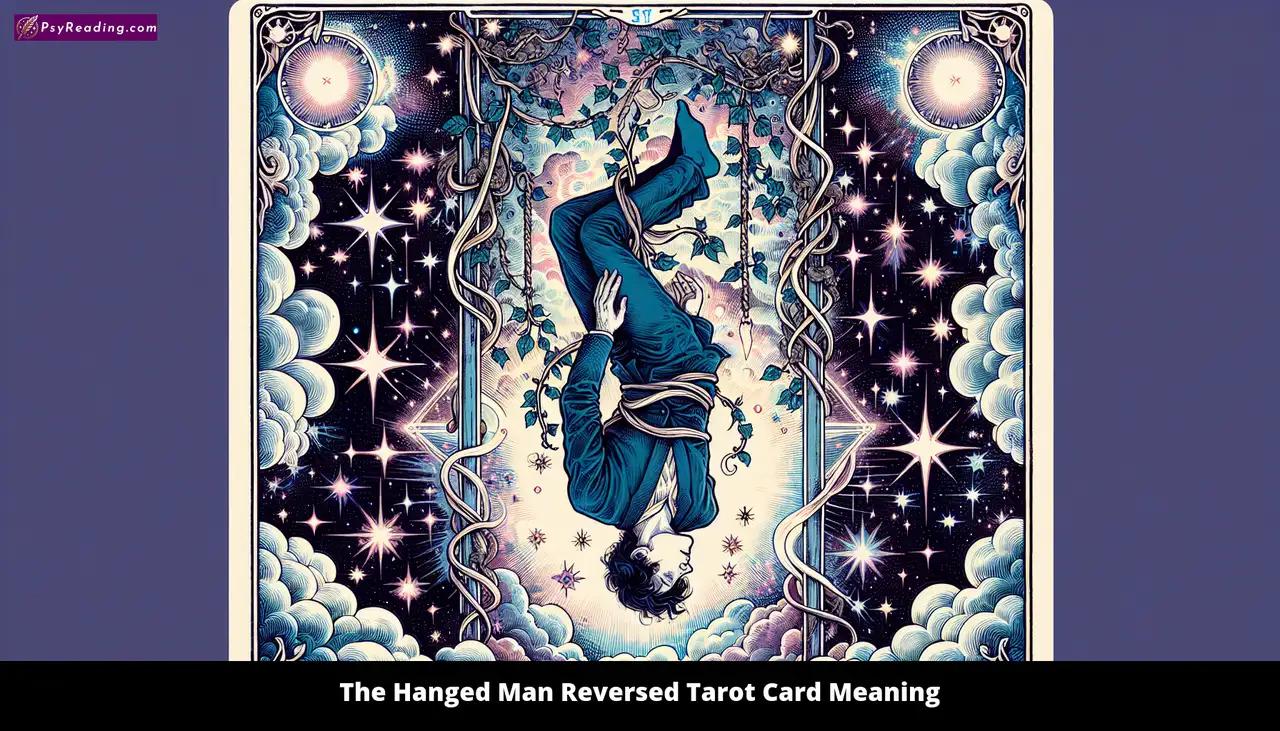The Tarot is an ancient divination tool steeped in symbolism and interpretation, where each card serves as a portal to deeper understanding. Among its most enigmatic cards is The Hanged Man, a figure suspended in a state of stillness, often interpreted as a symbol of sacrifice and introspection when in its upright position. However, when reversed, the meaning and implications of The Hanged Man take on a significantly different nuance that beckons exploration.
When The Hanged Man appears reversed in a reading, it can signify a disconnection from the consciousness that the upright position embodies. This card urges individuals to reflect on the state of liminality they may be experiencing—an intermediate condition that is often uncomfortable but ultimately transformative. A common observation among practitioners is that this reversal may indicate a sense of stagnation or resistance to the very changes that are necessary for personal growth. At times, it speaks volumes about the human condition, revealing a struggle against surrender and the yearning for agency in a world rife with uncertainties.
Stagnation and Resistance
The reversed Hanged Man is often viewed as a harbinger of stagnation, suggesting an unwillingness to adapt or to let go of control. This can manifest in myriad ways—perhaps there is an individual who remains tethered to outdated beliefs or relationships that no longer serve their best interests. The imagery of suspension becomes a metaphor for being stuck, questioning whether holding onto something is truly worth the cost of personal evolution.
This resistance can stem from a fear of the unknown. After all, embracing change often requires one to relinquish familiar comforts, even if they are detrimental. The reversed position can implicitly inquire: What fears are keeping you from moving forward? It prompts the seeker to confront their reluctance and to assess whether their current predicament is a result of their own inertia or external influences.
Insights into Self-Delusion
Another layer to the reversed Hanged Man is the notion of self-delusion. When upright, the card advocates for a perspective shift; it suggests looking at situations from a different angle. In contrast, the reversal can indicate a refusal to engage in that reevaluation, leading to complacency and self-deception. This aspect brings forth a sobering reality—a reminder that evading introspection often leads us into the labyrinth of our own constructs.
Consider this: a person might convince themselves that they are content in their current reality, neglecting the signs that suggest a deeper dissatisfaction. The reversed card begs the question: Are you truly satisfied, or merely comfortable in your illusions? It serves as a catalyst for personal honesty, nudging the individual to pierce through the veil of their self-created narratives.
Abandonment of Sacrifice
In the upright position, The Hanged Man is closely tied to the themes of surrender and sacrifice for a higher purpose. Reversed, however, it can represent the abandonment of these noble ideals. This signals a departure from the selflessness that can accompany genuine altruism, hinting at a more self-serving approach to life. Is the individual neglecting their responsibilities toward others? Are they prioritizing personal gain over communal welfare?
This abandonment of sacrifice can lead to more profound societal ramifications, particularly when individuals within a community forsake collaboration for the sake of personal ambition. Observers might note a troubling trend where the interconnectedness of human experience is sacrificed at the altar of individualistic pursuits. The disquiet generated by this state can complicate interpersonal relationships and create rifts where unity once thrived.
Unrealized Potential and Lack of Vision
The reversed Hanged Man may also allude to a stifling atmosphere of unrealized potential. When one hinders their vision and fails to see beyond the superficial, stagnation is inevitable. An individual may possess innate gifts and talents yet find themselves trapped, unable to leverage those abilities due to fear or external pressures. This card reminds us that fortified perspectives can obstruct creativity and limit one’s worldview.
In this light, the reversed Hanged Man challenges its observer, compelling them to explore untapped reservoirs of creativity. Are you holding back due to fear of failure? The duration of such repression can lead to feelings of frustration and melancholy, serving as a poignant reminder that life is ultimately about expanding one’s horizons and embracing vulnerabilities as a pathway to growth.
Integration and Transitioning
As much as The Hanged Man reversed highlights stagnation, it can also signal the potential for integration and the beginnings of transformation. Following a prolonged period of reflection and introspection, movement is often inevitable, albeit challenging. The shift from confusion to clarity can create a fertile ground for new beginnings. Thus, the reversed Hanged Man, while presenting trials, also contains implicit whispers of hope.
Engaging with this card because it provokes consideration about one’s trajectory allows for a more holistic approach to life. Instead of perceiving this reversal purely as a discouraging sign, it can represent the gateway to awakening. One may recognize the necessity of overturning old paradigms to welcome rejuvenation. The transitional state beckons individuals to acknowledge their stagnation, embrace discomfort, and take calculated steps toward authenticity and self-actualization.
Final Thoughts
The Hanged Man reversed is a multifaceted archetype, encapsulating themes of stagnation, self-delusion, and potential for transformation. It serves as a mirror, reflecting our complexities and encouraging profound introspection. In a world constantly oscillating between chaos and clarity, understanding the depths of this card empowers individuals to confront their fears, recognize their personal narratives, and embrace the radical possibility for change. By navigating this reversal, one can transcend limitations, ultimately leading to a more fulfilling existence.









Leave a Comment